Even in tough times, people want to scrub up nice. But growth in sales of facial moisturisers also reflects a DIY approach to beauty treatment, says Ellie Hughes
Weak, limp, lifeless: the issue of self-worth has been brought into question not just for Cheryl Cole, as she battles with the humiliation of an unfaithful husband, but for all of us, as the weakness of the economy challenges us to measure the value life's little luxuries have.
So where are we in personal care, one of the most obviously vulnerable categories to the forces of commoditisation and value erosion?
The £3bn market is up 3.9% in value compared with 2.8% the previous year, so there's been recovery of sorts. But growth still trailed total grocery sales, which rose 4.5% and, with volumes up 5%, there's evidently been price erosion too. Suppliers have also been engineering products into formats and sizes that allow them to be sold for a pound.
Category performance also varied hugely, with consumers spending big where they believed there was a significant difference in quality and effectiveness, but trading down in others. The brightest spot was facial moisturisers, which, enjoying a 15.5% value hike and a 10.3% volume increase, accounted for 46% of spend gains.
Conversely, sub-categories such as toothbrushes, shower gels and body moisturiser all struggled to grow both value and volume, with volume sales of razors falling 0.8% and bar soaps 2.4%, while toothbrushes (-4.1%), bath products (-3.5%) and tampons (-2.3%) were also casualties.
Some of the category developments can be attributed to changes in the wider world, says David Hughes, category manager for health and beauty distributor DCS Europe. "Long-term trends such as using showers instead of baths and a preference for liquid hand wash as opposed to bar soap are impacting the market," he notes.
The recession has also encouraged consumers to take a more DIY approach to wellbeing. Visits to beauticians have been axed in favour of home therapy. "People have welcomed lines with powerful ingredients that offer an alternative to professional therapy," says Cate Hunt, insight director at brand development firm Added Value.
Innovation has also been key, however, and one reason for growth in facial moisturisers is a flurry of NPD. The fastest-growing facial moisturiser is budget brand Simple, growing at 16.3% in value [IRI 52w/e 20 March 2010] and, as well as being the number one brand of skincare by unit, in late 2009 it overtook L'Oréal to become the second-biggest brand by value [IRI], behind Olay.
Everyday brand Simple has launched Vitamin E Serum Pads, new day and night creams in the core Kind to Skin range, an eye make-up remover and, rolling out last month starting with Superdrug, is the new Simple Spotless Skin range aimed at the niche teenager market.
Supported by increased above-the-line marketing including the new Goodness TV campaign and new packaging, the brand is growing at 11 times the market, says Simple Health & Beauty brand development senior brand manager Rachel Snary.
Market leader Olay has been equally busy. Recent NPD has included Definity Colour Enhancer (see p56), Total Effects Touch of Foundation, Eye Dermapods and Wrinkle filler. "We understand that even in tough economic times, women still look for a treat and this is often something new," says P&G UK beauty marketing director Zaid Alqassab.
But priorities have changed, and in the week that website MoneySavingExpert exposed Boots for selling lotions for £8 that cost £1 at Poundland, Alqassab detects increased hunger for value. "The one common theme is consumers demanding high performance at great value from brands they trust."
Murray Bisschop, category director for skin at Unilever, says consumers are becoming genuinely discerning. "Some new lines have been successful; some haven't. New products have to offer something groundbreaking. Unilever's Vaseline Sheer Infusion does just this," he adds.
Alqassab adds: "There is also a growing focus on the clinical proof behind claims. We've been providing this for years but are now giving more focus to communicating this to consumers."
Innovation is unlikely to stop there. Inspired by the science of genes, L'Oréal's launch of Youth Code in January has been "a phenomenal success, which has really resonated with today's consumer", claims UK spokeswoman Juliet Cornwell.
And a L'Oréal report on the UK predicts that 2010 will see increasing use of scientific technology such as genomics and proteomics (the study of proteins in the skin) and stem cell research in anti-ageing products. L'Oréal also believes built-in applicators, seen to improve effectiveness, will grow in popularity. L'Oréal's Garnier brand unveiled a tinted version of Eye Roll On for dark circles in January.
But it's not all about groundbreaking technology. Nostalgia is also revitalising sales, says Rebecca Woods, consultant at brand agency Dragon Rouge. She cites The Body Shop's new Originals range, which has brought back favourites from the 80s including dewberry shower gel, and Boots, which dived back into its archives last year when it launched its Original Beauty Formula collection.
Natural products also continue to appeal. Herbie Dayal, CEO for KMI Brands, recently acquired the Naked portfolio.
"Products that can deliver results yet steer clear of chemicals are the ones that will be successful." Added Value's Hunt agrees: "Women's facial care has seen the emergence of brands, like Ren, that use natural and organic ingredients backed with an ethical ethos. Newer launches are going further than recyclable packaging and a few natural ingredients; they are sourced and produced sustainably, and look good."
In the meantime, manufacturers are also doing their level best to add excitement to more sluggish sub-categories such as oral care and razors. One of the more daring stunts was Lil-lets' direct mail campaign last June, which posted samples out along with arch rival Tampax. In January, P&G gave Tampax a striking new look.
In razors, Wilkinson Sword redesigned its packaging to give its range a more unified, eye-catching look. It also launched the Quattro Women Bikini a two-in-one razor and bikini trimmer last year, and Wilkinson Sword marketing manager Simon Spicer believes the female razor market still has lots of room for growth.
But after years of innovation and more blades than Edward Scissorhands the recession has dented the near-constant innovation. Irwin Lee, vice president of P&G UK and Northern Ireland, admits the razor category is down, but says Fusion has done very well.
"It is a misconception that we are shaving less. Consumers are playing around between system blades, such as Mach3 and Fusion, and disposables. That is why we came out with big value packs £20 for a pack of 12 just before Christmas. Buying your year's worth of blades in one pack like this is better. But people forget how much R&D is involved in manufacturing system razors. It's almost semiconductor/Intel-grade technology."
Focus On Personal Care
Weak, limp, lifeless: the issue of self-worth has been brought into question not just for Cheryl Cole, as she battles with the humiliation of an unfaithful husband, but for all of us, as the weakness of the economy challenges us to measure the value life's little luxuries have.
So where are we in personal care, one of the most obviously vulnerable categories to the forces of commoditisation and value erosion?
The £3bn market is up 3.9% in value compared with 2.8% the previous year, so there's been recovery of sorts. But growth still trailed total grocery sales, which rose 4.5% and, with volumes up 5%, there's evidently been price erosion too. Suppliers have also been engineering products into formats and sizes that allow them to be sold for a pound.
Category performance also varied hugely, with consumers spending big where they believed there was a significant difference in quality and effectiveness, but trading down in others. The brightest spot was facial moisturisers, which, enjoying a 15.5% value hike and a 10.3% volume increase, accounted for 46% of spend gains.
Conversely, sub-categories such as toothbrushes, shower gels and body moisturiser all struggled to grow both value and volume, with volume sales of razors falling 0.8% and bar soaps 2.4%, while toothbrushes (-4.1%), bath products (-3.5%) and tampons (-2.3%) were also casualties.
Some of the category developments can be attributed to changes in the wider world, says David Hughes, category manager for health and beauty distributor DCS Europe. "Long-term trends such as using showers instead of baths and a preference for liquid hand wash as opposed to bar soap are impacting the market," he notes.
The recession has also encouraged consumers to take a more DIY approach to wellbeing. Visits to beauticians have been axed in favour of home therapy. "People have welcomed lines with powerful ingredients that offer an alternative to professional therapy," says Cate Hunt, insight director at brand development firm Added Value.
Innovation has also been key, however, and one reason for growth in facial moisturisers is a flurry of NPD. The fastest-growing facial moisturiser is budget brand Simple, growing at 16.3% in value [IRI 52w/e 20 March 2010] and, as well as being the number one brand of skincare by unit, in late 2009 it overtook L'Oréal to become the second-biggest brand by value [IRI], behind Olay.
Everyday brand Simple has launched Vitamin E Serum Pads, new day and night creams in the core Kind to Skin range, an eye make-up remover and, rolling out last month starting with Superdrug, is the new Simple Spotless Skin range aimed at the niche teenager market.
Supported by increased above-the-line marketing including the new Goodness TV campaign and new packaging, the brand is growing at 11 times the market, says Simple Health & Beauty brand development senior brand manager Rachel Snary.
Market leader Olay has been equally busy. Recent NPD has included Definity Colour Enhancer (see p56), Total Effects Touch of Foundation, Eye Dermapods and Wrinkle filler. "We understand that even in tough economic times, women still look for a treat and this is often something new," says P&G UK beauty marketing director Zaid Alqassab.
But priorities have changed, and in the week that website MoneySavingExpert exposed Boots for selling lotions for £8 that cost £1 at Poundland, Alqassab detects increased hunger for value. "The one common theme is consumers demanding high performance at great value from brands they trust."
Murray Bisschop, category director for skin at Unilever, says consumers are becoming genuinely discerning. "Some new lines have been successful; some haven't. New products have to offer something groundbreaking. Unilever's Vaseline Sheer Infusion does just this," he adds.
Alqassab adds: "There is also a growing focus on the clinical proof behind claims. We've been providing this for years but are now giving more focus to communicating this to consumers."
Innovation is unlikely to stop there. Inspired by the science of genes, L'Oréal's launch of Youth Code in January has been "a phenomenal success, which has really resonated with today's consumer", claims UK spokeswoman Juliet Cornwell.
And a L'Oréal report on the UK predicts that 2010 will see increasing use of scientific technology such as genomics and proteomics (the study of proteins in the skin) and stem cell research in anti-ageing products. L'Oréal also believes built-in applicators, seen to improve effectiveness, will grow in popularity. L'Oréal's Garnier brand unveiled a tinted version of Eye Roll On for dark circles in January.
But it's not all about groundbreaking technology. Nostalgia is also revitalising sales, says Rebecca Woods, consultant at brand agency Dragon Rouge. She cites The Body Shop's new Originals range, which has brought back favourites from the 80s including dewberry shower gel, and Boots, which dived back into its archives last year when it launched its Original Beauty Formula collection.
Natural products also continue to appeal. Herbie Dayal, CEO for KMI Brands, recently acquired the Naked portfolio.
"Products that can deliver results yet steer clear of chemicals are the ones that will be successful." Added Value's Hunt agrees: "Women's facial care has seen the emergence of brands, like Ren, that use natural and organic ingredients backed with an ethical ethos. Newer launches are going further than recyclable packaging and a few natural ingredients; they are sourced and produced sustainably, and look good."
In the meantime, manufacturers are also doing their level best to add excitement to more sluggish sub-categories such as oral care and razors. One of the more daring stunts was Lil-lets' direct mail campaign last June, which posted samples out along with arch rival Tampax. In January, P&G gave Tampax a striking new look.
In razors, Wilkinson Sword redesigned its packaging to give its range a more unified, eye-catching look. It also launched the Quattro Women Bikini a two-in-one razor and bikini trimmer last year, and Wilkinson Sword marketing manager Simon Spicer believes the female razor market still has lots of room for growth.
But after years of innovation and more blades than Edward Scissorhands the recession has dented the near-constant innovation. Irwin Lee, vice president of P&G UK and Northern Ireland, admits the razor category is down, but says Fusion has done very well.
"It is a misconception that we are shaving less. Consumers are playing around between system blades, such as Mach3 and Fusion, and disposables. That is why we came out with big value packs £20 for a pack of 12 just before Christmas. Buying your year's worth of blades in one pack like this is better. But people forget how much R&D is involved in manufacturing system razors. It's almost semiconductor/Intel-grade technology."
Focus On Personal Care







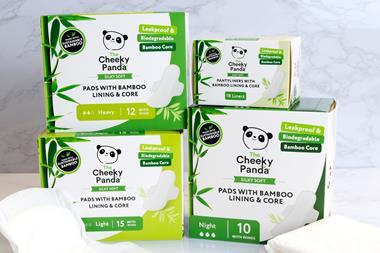
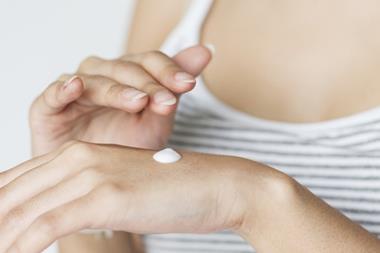
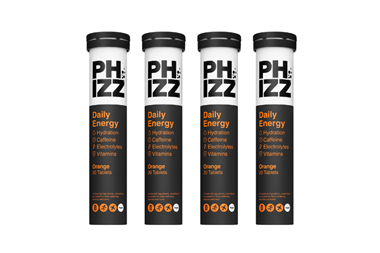
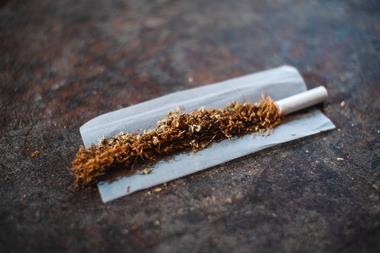
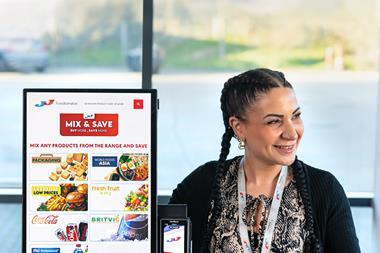





No comments yet